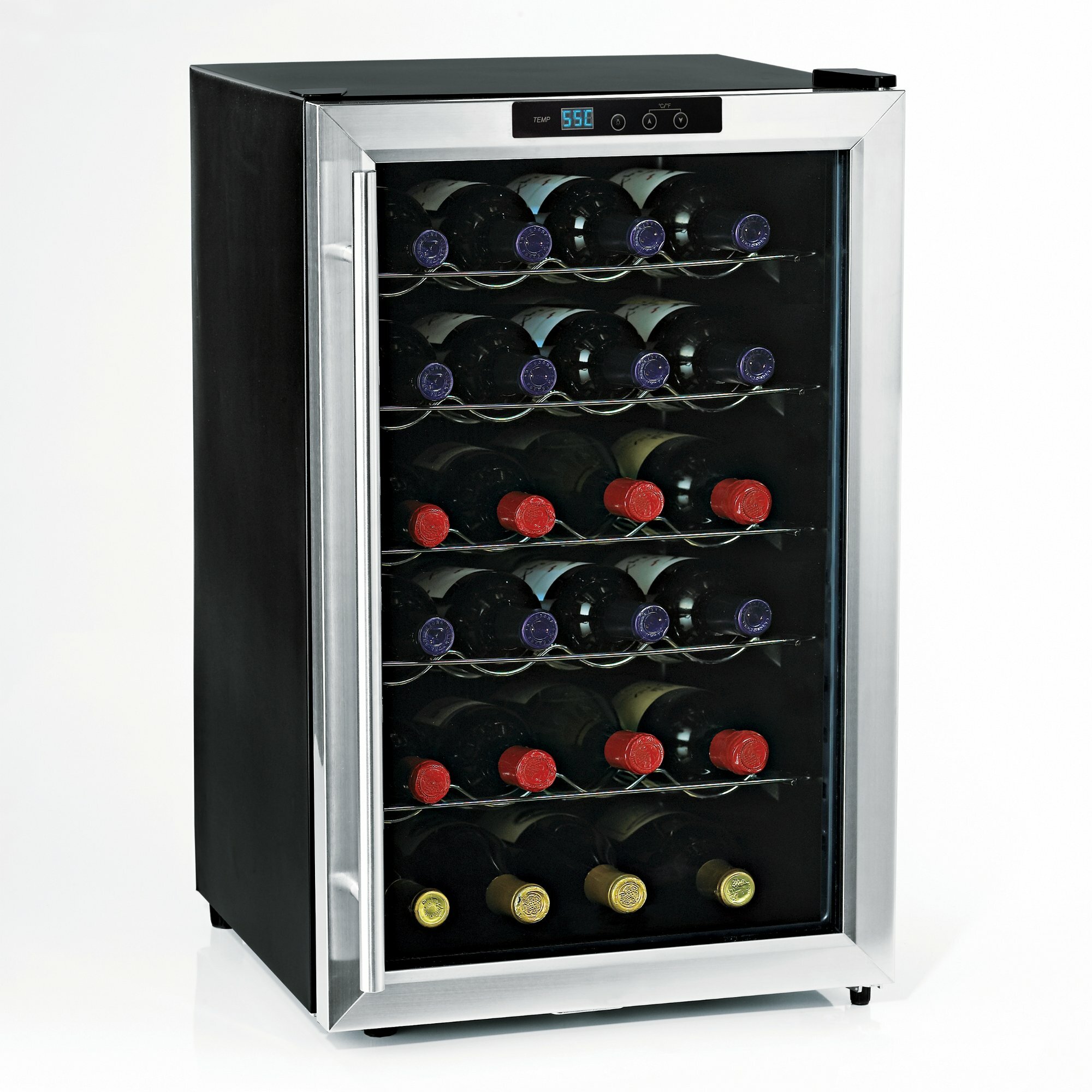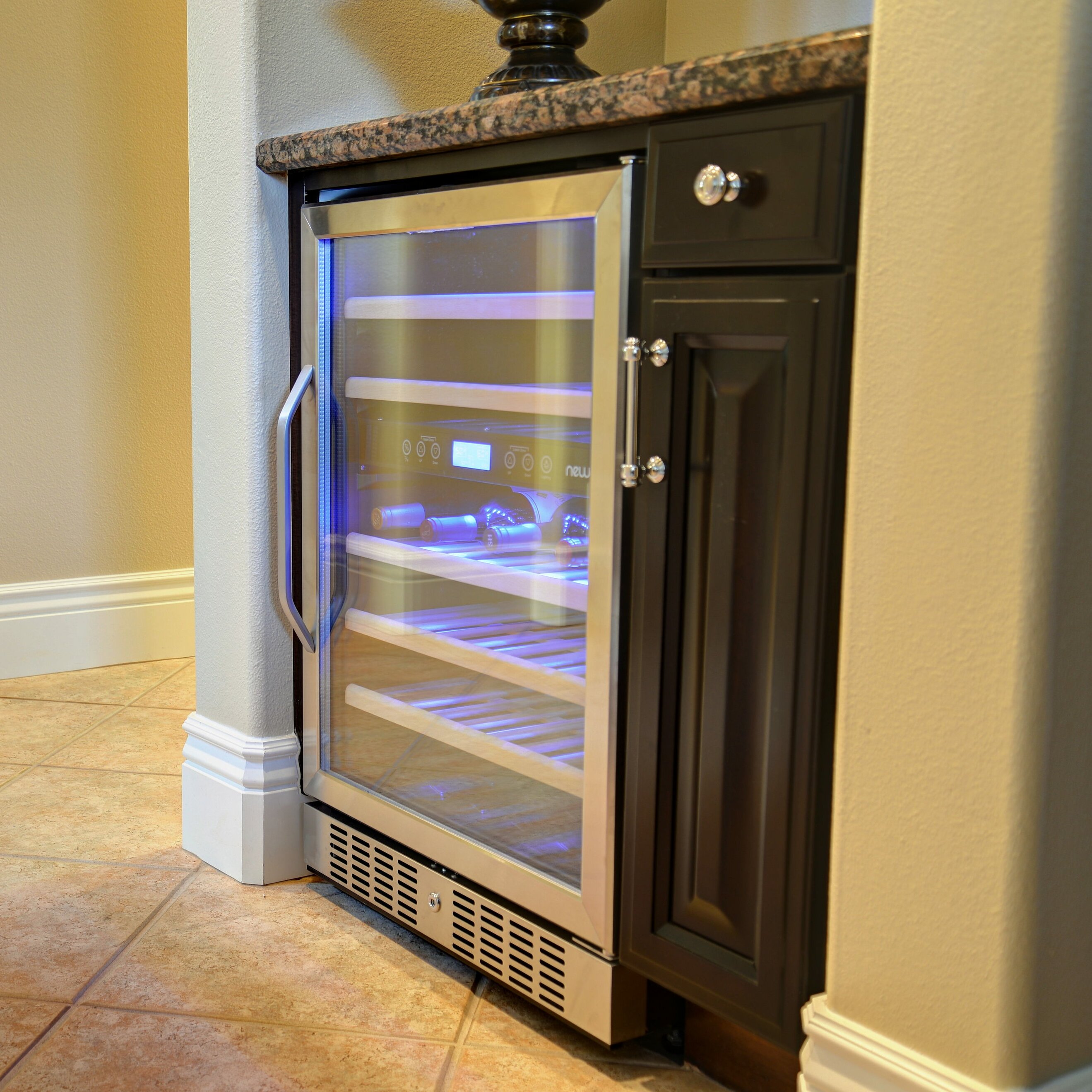Wine Cabinet with Humidity Control

A wine cabinet with humidity control is an essential investment for any serious wine enthusiast. It provides a controlled environment that helps to preserve the quality and flavor of your wine collection. Maintaining the ideal humidity level is crucial for preventing cork dryness, which can lead to oxidation and spoilage.
Importance of Humidity Control
Humidity control is essential for wine storage because it prevents the corks from drying out. When corks become dry, they can shrink and allow oxygen to enter the bottle, which can oxidize the wine and cause it to spoil. The ideal humidity level for wine storage is between 60% and 75%.
Benefits of Using a Wine Cabinet with Humidity Control
A wine cabinet with humidity control offers numerous benefits for wine storage, including:
- Preservation of Wine Quality: Maintaining the ideal humidity level prevents cork dryness and oxidation, preserving the quality and flavor of your wine collection.
- Protection from Temperature Fluctuations: Wine cabinets with humidity control often feature temperature control, which helps to protect your wine from temperature fluctuations that can damage the delicate flavors and aromas.
- Convenience and Accessibility: Wine cabinets provide a dedicated space for your wine collection, making it easy to access and organize your bottles.
- Aesthetic Appeal: Wine cabinets come in various styles and designs, adding a touch of elegance and sophistication to your home.
Types of Wine Cabinets with Humidity Control
Wine cabinets with humidity control come in a variety of sizes, styles, and features to suit different needs and budgets. Some common types include:
- Compact Wine Cabinets: These cabinets are ideal for smaller collections and offer basic humidity and temperature control features.
- Mid-Sized Wine Cabinets: These cabinets offer more storage space and advanced features, such as multiple temperature zones and digital controls.
- Large Wine Cabinets: These cabinets are designed for extensive wine collections and may include features like built-in lighting, glass doors, and custom shelving.
Comparison of Wine Cabinet Models
The following table compares the features and benefits of different wine cabinet models:
| Model | Capacity | Temperature Range | Humidity Control | Features | Price Range |
|---|---|---|---|---|---|
| [Model Name 1] | [Capacity] | [Temperature Range] | [Humidity Control Range] | [Features] | [Price Range] |
| [Model Name 2] | [Capacity] | [Temperature Range] | [Humidity Control Range] | [Features] | [Price Range] |
| [Model Name 3] | [Capacity] | [Temperature Range] | [Humidity Control Range] | [Features] | [Price Range] |
Key Features of a Wine Cabinet with Humidity Control

A wine cabinet with humidity control is a specialized appliance designed to create and maintain the optimal storage conditions for wine, ensuring its preservation and aging potential. These cabinets are equipped with various features that work in harmony to provide a controlled environment, protecting your valuable wine collection from the damaging effects of temperature fluctuations, humidity changes, and UV exposure.
Components of a Wine Cabinet with Humidity Control
The key components of a wine cabinet with humidity control are essential for creating and maintaining the ideal storage environment. These components work together to ensure that your wine is stored at the correct temperature and humidity levels, protecting it from spoilage and preserving its flavor and aroma.
- Temperature Control System: This system maintains the desired temperature within the cabinet, typically ranging from 45°F to 65°F (7°C to 18°C), depending on the type of wine being stored. Temperature control is achieved through a combination of thermostats, sensors, and cooling mechanisms. The thermostat monitors the temperature inside the cabinet and activates the cooling system when necessary to maintain the set temperature.
- Humidity Control System: This system regulates the moisture levels inside the cabinet, typically maintaining a humidity range of 50% to 75%. Humidity control is achieved through a combination of humidifiers, dehumidifiers, and sensors. The sensors monitor the humidity levels and activate the humidifiers or dehumidifiers to maintain the desired range. A humidifying system adds moisture to the air, while a dehumidifying system removes excess moisture. This is crucial for preventing the wine from drying out or becoming too humid, which can lead to spoilage.
- UV Protection: Wine is sensitive to ultraviolet (UV) light, which can degrade its color, flavor, and aroma. Wine cabinets with humidity control often feature UV-resistant glass or a dark interior to block out harmful UV rays. This helps to protect the wine from premature aging and deterioration.
- Vibration Control: Excessive vibrations can negatively impact the aging process of wine, causing sediment to become disturbed and potentially affecting its quality. Wine cabinets with humidity control often feature vibration-dampening mechanisms to minimize vibrations, ensuring a stable and undisturbed environment for your wine collection.
- Shelving System: The shelving system in a wine cabinet is designed to provide secure and organized storage for your wine bottles. Some cabinets offer adjustable shelves to accommodate different bottle sizes, while others may feature specific compartments for storing specific types of wine. The shelving system should be designed to prevent bottles from rolling or tilting, ensuring their stability and preventing cork damage.
Importance of Temperature and Humidity Control for Wine Preservation
Temperature and humidity control are critical for wine preservation, as they directly impact the aging process and the quality of the wine.
- Temperature: Temperature fluctuations can accelerate the aging process of wine, leading to premature oxidation and loss of flavor. Consistent temperature is crucial for maintaining the balance of chemical reactions within the wine, allowing it to age gracefully.
- Humidity: Humidity levels affect the moisture content of the wine cork, which plays a vital role in preventing oxidation. Too low humidity can lead to the cork drying out, allowing air to penetrate the bottle and oxidize the wine. Too high humidity can create a damp environment, potentially leading to mold growth and damage to the labels.
Ideal Temperature and Humidity Ranges for Different Wine Types
| Wine Type | Ideal Temperature (°F) | Ideal Humidity (%) |
|---|---|---|
| Red Wine | 55°F – 65°F (13°C – 18°C) | 55% – 75% |
| White Wine | 45°F – 55°F (7°C – 13°C) | 55% – 75% |
| Sparkling Wine | 45°F – 50°F (7°C – 10°C) | 55% – 75% |
| Dessert Wine | 50°F – 60°F (10°C – 16°C) | 55% – 75% |
Selecting the Right Wine Cabinet with Humidity Control

Choosing the right wine cabinet with humidity control is crucial for preserving your valuable wine collection. It involves considering several factors, including your budget, the size of your collection, and the features you need.
Factors to Consider When Selecting a Wine Cabinet
The decision to buy a wine cabinet involves considering several factors that influence your choice. The most important factors include:
- Capacity: Determine the number of bottles you intend to store and choose a cabinet with sufficient capacity. Consider your future needs and potential growth of your collection.
- Features: Identify the essential features you require, such as temperature control, humidity control, vibration reduction, and UV protection. Some cabinets offer additional features like integrated lighting and a lock.
- Budget: Set a realistic budget and explore options within your price range. Consider the features and quality offered by different brands and models.
Brand Comparison
Here is a table comparing popular wine cabinet brands and their key features:
| Brand | Capacity | Temperature Control | Humidity Control | Features | Price Range |
|---|---|---|---|---|---|
| Wine Enthusiast | 12-180 bottles | Yes | Yes | UV protection, vibration reduction, digital display | $200-$2,000+ |
| EuroCave | 12-300+ bottles | Yes | Yes | Triple-pane glass, advanced humidity control, adjustable shelves | $1,000-$10,000+ |
| Haier | 12-180 bottles | Yes | Yes | LED lighting, vibration reduction, quiet operation | $300-$1,500+ |
| NewAir | 12-120 bottles | Yes | Yes | Digital controls, adjustable shelves, lockable door | $200-$1,000+ |
| Avanti | 12-120 bottles | Yes | Yes | UV protection, vibration reduction, sleek design | $250-$1,200+ |
Determining the Right Size and Capacity, Wine cabinet with humidity control
The size and capacity of a wine cabinet are crucial considerations.
- Current Collection Size: Assess the number of bottles you currently own. This provides a starting point for determining the minimum capacity needed.
- Future Growth: Consider the potential growth of your collection over time. Allow for expansion by choosing a cabinet with a slightly larger capacity than your current needs.
- Storage Space: Measure the available space in your home where you plan to install the wine cabinet. Ensure that the chosen cabinet fits comfortably in the designated area.
Factors Affecting Wine Cabinet Price
Several factors influence the price of a wine cabinet with humidity control.
- Capacity: Larger cabinets with greater storage capacity tend to be more expensive. The cost increases with the number of bottles the cabinet can accommodate.
- Features: Advanced features, such as precise temperature control, multiple temperature zones, and advanced humidity control, contribute to higher prices. Additional features like integrated lighting, locks, and vibration reduction systems also affect the cost.
- Brand Reputation: Established brands with a reputation for quality and innovation often command higher prices. However, this is not always the case, and reputable lesser-known brands can offer excellent value for money.
- Materials and Construction: Cabinets constructed with high-quality materials, such as stainless steel and tempered glass, tend to be more expensive. The craftsmanship and design also play a role in determining the price.
A wine cabinet with humidity control, a sanctuary for your precious vintages, can be enhanced by a touch of elegance. Just as you carefully curate your collection, consider incorporating glass inserts for kitchen cabinets in your wine cabinet. These translucent panels offer a glimpse into the treasures within, adding a touch of sophistication and allowing you to showcase your prized bottles.
A wine cabinet with humidity control is a sanctuary for your precious vintages, ensuring they age gracefully, their flavors deepening with time. For those seeking a stylish complement to their wine collection, a black buffet cabinet nz offers a sophisticated touch.
Its sleek design and ample storage space make it a perfect companion to a dedicated wine cabinet, creating a cohesive and elegant display for your curated collection.
